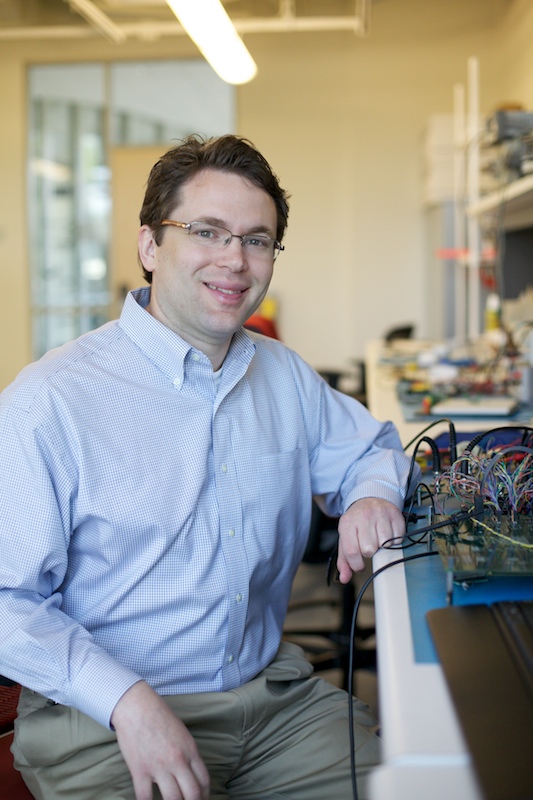As U.S. families increasingly face the challenge of caring for elderly relatives with dementia, a multi-university team of engineers and clinicians is developing technological tools aimed at easing the care-giving burden and extending a patient’s ability to live at home.
Professor John Lach, who chairs the University of Virginia’s Charles L. Brown Department of Electrical and Computer Engineering, is leading a collaborative and interdisciplinary project called BESI, or Behavioral and Environmental Sensing and Intervention for Dementia Caregiver Empowerment. His team recently received a four-year, $2.1 million grant from the National Science Foundation and the National Institutes of Health.
The team – Lach, Dr. Martha Anderson and Dr. Azziza Bankole of the Carilion Center for Healthy Aging in Roanoke, and Tonya Smith-Jackson, professor and chair of Industrial and Systems Engineering at North Carolina A&T State University – is working to develop non-pharmaceutical interventions that would reduce the incidence and severity of dementia-related agitation in order to allow patients to stay in their own homes, a care option that offers many quality-of-life and financial benefits. Sensors would alert caregivers when a patient is about to become agitated, which would allow the caregiver to intervene before the agitation escalates, in turn easing the stress of both the patient and the caregiver.
Lach points out that the No. 1 reason cited for transitioning a dementia patient from home-based care to a long-term care facility is the stress that dementia-related agitation places on the caregiver.
“It’s a tremendous caregiver burden, to see a loved one behave in ways that are not consistent with who they usually are,” Lach said. “In addition, agitation can be very unpredictable, and there’s no one thing you can do to manage it.”
The BESI system uses sensors placed in the home and on the body – in the form of a wristwatch-type device – to detect early stages of agitation. The wrist sensor would pick up on a jerky or repetitive motion, for example, while the environmental sensors would measure temperature, humidity, light levels and noise – factors that in combination can trigger agitation.
The system would notify caregivers via smartphone so they can calm the patient and alter the environment before the agitation escalates. “We’re giving the caregiver the tools and information they need,” Lach said.
Additionally, there would be doorway sensors to detect when people enter or leave a room. “Part of what we’re trying to monitor is the external stimulation that the patient is subjected to, and that includes people,” Lach said. “Interpersonal interaction is a key external stimulus that may or may not have some causal relationship with agitation.”
For privacy reasons, the researchers will not include cameras.
In developing the tools, the team has been inspired by discussions with patient advocacy groups – discussions that involved how better to provide data to caregivers. “It opened up this whole new line of thinking for caregiver support technology,” Lach said.
Currently, the project is in the design and lab-testing phases; the team hopes to have a fully functional system with demonstrated potential impact ready for a full-scale study later this year.
Both graduate and undergraduate students are contributing to developing the sensor system and the data-processing techniques, as well as modeling and analysis. “Working on such real-world problems is not only exciting for students but rewarding and a great educational experience,” Lach said.
Shortly into the project last year, the work became personal for Lach when his own mother exhibited signs of dementia in the last weeks of her life. He observed the toll her dementia and associated agitation took on his father.
“I did see firsthand the impact of dementia-associated agitation on a caregiver,” he said, “and that’s absolutely something that has led me to redouble my efforts to ensure this project is a success.”
Media Contact
Article Information
April 1, 2015
/content/wireless-technology-sought-preempt-dementia-related-agitation

